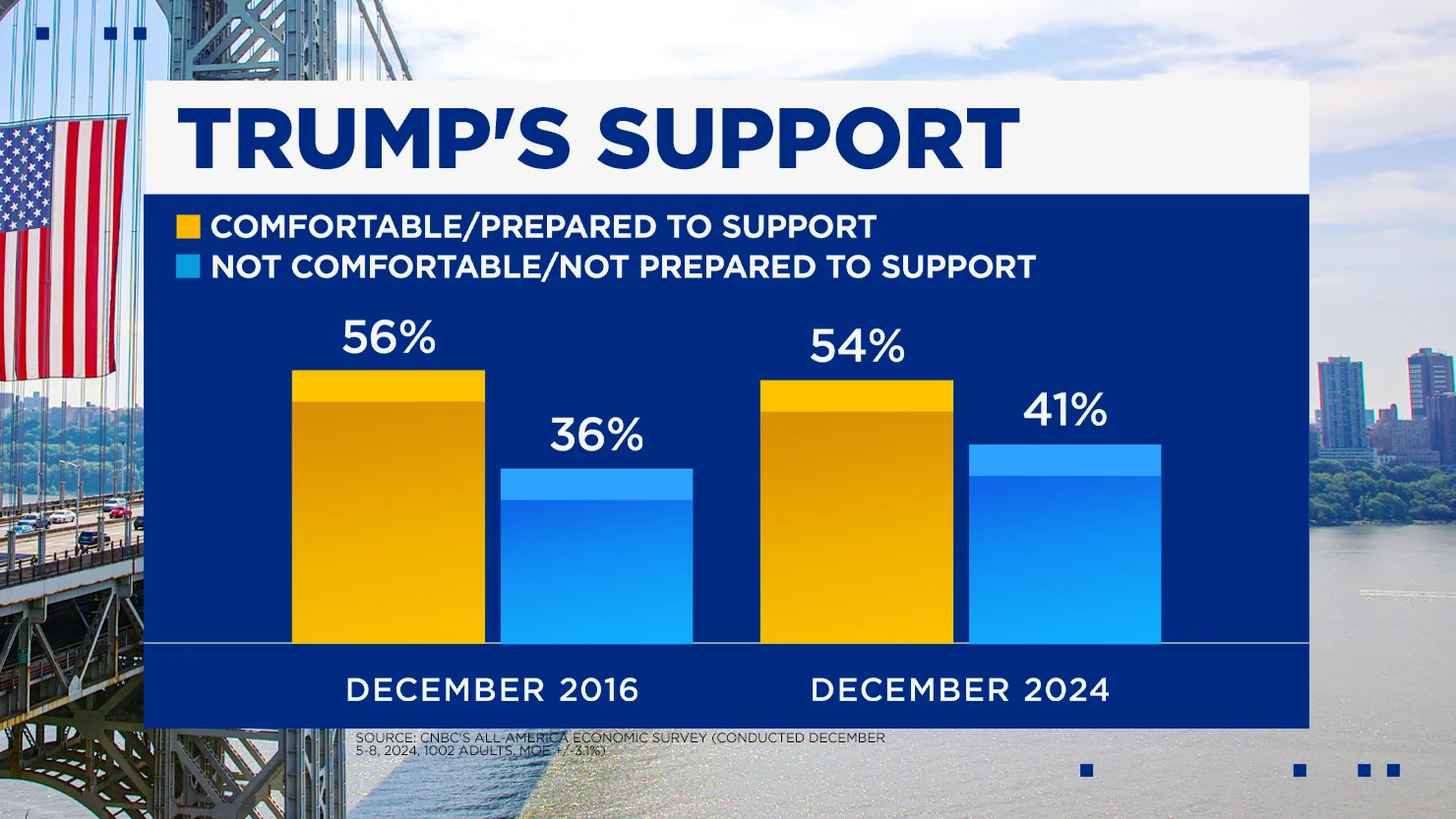
54% of Americans are about to find out that their insurance companies will no longer cover their Hopium prescriptions.

Can you please just restart your country? And run a virus scan.
No virus scans under RFK’s watch, sorry.
Try hitting him with a stick and shush him back to the woods.
The only antivirus we have installed is Windows Defender thanks to the Microsoft DoD contract
And it doesn’t even defend against Windows 😔
Oh we’re definitely on track for that. The reboot won’t be any better though. “Classic Coke: now with 600% more billionaire control!”
While it’s just a poll and should be met with healthy skepticism, this is also where we are at as a nation. If you’re horrified by the result of this poll, me too, but that’s an illustration of how much work needs to be done. Now is not the time to wallow or wring our hands or rend our clothes. Now is the time for action. Things won’t get better without your help.
Ok. How do people help?
We did this last time around, and absolutely nothing I did, no volunteering, going door to door, signing petitions, protesting, having “rational” conversations, etc., made a dent. Nothing.
So what do we do here when they are fully and openly fascist and have all 3 branches of the government fully under their control?
Have you tried a bake sale?
/s
CNBC is a mouthpiece of the billionaires just like fortune
Yup. Buckle up buckaroos.
Got an email from HR this morning to make sure that any employees who were late had it noted on their time cards and any one who had to leave for doctors visits had the proper doctors note upon return.
It’s been years since we’ve been requiring any of this sort of stuff but suddenly we are going to start dicking the employees again and not just here.
My wife told me, she was told by a friend in HR that her company that they anre about to start rolling out some pretty draconian rules for employees (right out of the Project 2025 playbook).
Prepare to enter the Fuck Around and Find Out stage my friends.
Being late and needing doctors notes are draconian? Are there more serious things HR is saying they will be rolling out?
Wait until you get an adult job where they don’t treat you like a criminal/thief/moocher by default.
yeah…this is a little out of touch.
Doctors note is a bit extreme unless it’s a repeat issue. Being late for work and it being an issue is hardly “draconian”. Hard to take complaints seriously when this is what the sky is falling is supposed to look like. I’d save terms like that for overtime being removed, workplace protections being stripped, nlrb being overturned, not “I can’t just show up whenever”
Fr lol. Bro is mad his work is basic
Are these the same Americans that don’t know that the ACA and Obamacare are the same thing, but want different things to happen to each? Fuck us all.
Please buckle your seat belts and keep your arms and legs inside the ride at all times. We are now entering the “Find Out” portion of the ride. God luck.
54% of 1000 ppl. Majority of 300+ million. Yeah this seems totally legit and not bait.
🤡
And yet, only 22% voted for him… hmmmmmmm…
A little low sample size. Standard is 2000 and any more is wasted effort.
It’s helpful to remember that news reporting on anything involving numbers is usually relying heavily on hyperbolic horse shit.
Here is the “source data” (LOL) for this: https://pos.org/wp-content/uploads/2024/12/FI14730D-CNBC-AAES-Q4.pdf
There are some key points that really matter here:
- What method was used to select the “1002 adults nationwide”? This is not described. Was it people with landlines that skew heavily older and conservative? Was it an even mix of blue and red states? IOW, was it even really random? I could not find this information anywhere.
- This polling was conducted by an outfit named “Public Opinion Strategies” (appropriately, POS). Since we apparently can’t know what sampling method was used (please! correct me if I’m wrong), we can maybe derive something from the either the organization doing the polling or the data itself. 2a: The data shows a slight shift to identifying as Republican (42/39). Anecdotally we can maybe surmise that people who say they are “strictly independent” may lean right-wing. Other demographic info suggests a slight bias toward older and less educated. 2b: In 2024 POS has been heavily used by Republicans. You can find this data on Open Secrets. Basically every single entity that gave them money that I looked up is Republican.
So, tl;dr until any poll can tell me their methodology and confirm that their sampling is truly random I’m just going to laugh at the “conclusions” made by the media.
Where did they hide that link? It’s not in the article or the link the article points to when referencing the survey. Not surprising they want to hide it considering how speculative they are in their extrapolations.
It wasn’t in the article or anything the article referenced. I had to dig for it. And yeah, not surprising at all.
Oh yeah, I need to buy those solar panels before Jan 20, thank you for reminding me.
They voted for him so yes that would be the case.
Where is the survey data? The article link just points to more articles editorializing.
If they just asked 1000 people willing to answer a survey from an unknown caller that’s not exactly the heartbeat of a nation.
They just make shit up now, that was what the majority of pollsters were doing in the lead up to the election
News conglomerates owned by the rich exist to manufacture consent.
Overall, the survey found that 54% of the public are “comfortable and prepared to support” Trump as president. That’s down 2 points from when he took office in 2016. Some 41% are not comfortable, up 5 points from 2016.
The survey of 1,000 people nationwide was taken Dec. 5-8. It has a margin of error of +/- 3.1%.
The survey found 60% say deploying the military to the border to stop illegal drugs and human trafficking should be a 2025 priority for the new administration, with an additional 13% saying it should still be done but later in the term. The proposal is only opposed outright by 24%, including 51% of Democrats, 12% of independents and 3% of Republicans.
Support for raising tariffs is also more lukewarm, with 27% backing it outright and 24% saying it can be done later in the term. It’s opposed by 42% of respondents.
I’m sorry, this article isn’t worth the bits it’s saved in. Trying to read the national opinion and using just 1,000 people is bad science. At best this represents the (very small) portion of the population who would waste their time responding to a junk survey.
That’s pretty standard size for a national opinion survey. How large do you think they’re supposed to be?
For good, reliable data, several orders of magnitude more than 1,000 and it would need to have the methodology and data published along with it.
Opinion polls in general are not reliable sources of information and the wrong approach anyway. Telling people that X% of their neighbors hold Y opinion is a well known and effective propaganda and marketing tool for influencing opinion and decision making.
It’s essentially institutional peer pressure.
I have never seen any sort of poll of Americans several orders of magnitude more than 1000. Can you give an example please?
Most of them would be from an academic source most likely. That kind of polling would be very expensive and time consuming. There probably aren’t commercial, short term polls with that level of rigor.
A 2020 study published by Berkeley found that the accuracy of election surveys (which are conducted similarly to opinion polls) was grossly exaggerated.
A 2018 Cambridge study says “the level of error has always been substantially beyond that implied by stated margins of error.”
Okay, since that sort of polling would be very expensive and time consuming and people would like to know the opinions of their fellow citizens in aggregate, what would you suggest?
Nothing. That information is not actually useful for most people. But I fully acknowledge that’s just my opinion.
A better solution would be different metrics for different topics. Consumer faith in the economy can be measured by spending, especially if that data could be broken down by demographic. That data absolutely exists, whether businesses would make it public is abother thing entirely.
The results of the election, especially given it was less than six weeks ago, is a much more compelling data point for how Americans feel about the president elect and his policies. Just under half of all Americans voted, so that’s a pretty decent sample.
The “best solution” would be for news organizations to pool resources and do it more reliably. That would mean no more flash polls or opinion polls, and favor longer term tracking of public sentiment.
Social media companies also have much more robust sets of data that better encapsulate public opinion, they could share that quarterly or even just sell reports to news outlets.
But polls are so unreliable and so many people blindly trust and believe them, eliminating that entire class of reporting would be preferable to continuing to publish and circulate that information.
Polls seemed pretty reliable when it came to the election.
Pew Research is pretty much a gold standard. In a recent survey on Ukraine they polled almost 10,000 https://www.pewresearch.org/short-reads/2024/11/25/wide-partisan-divisions-remain-in-americans-views-of-the-war-in-ukraine/
Also they post their dataset and methodology. Any poll/survey that doesn’t do that is reasonably suspect.
This Pew Research?
The one with this page entitled, “How can a survey of 1,000 people tell you what the whole U.S. thinks?”
https://www.pewresearch.org/short-reads/2017/05/12/methods-101-random-sampling/
Did you even watch the video? Do you not see the difference between what Pew does with a 1,000 people and what fucking CNBC does?
I thought the argument was that you couldn’t get an accurate sample size of Americans with just 1000 people, not that CNBC’s methodology was wrong.
Yeah, I’m not sure how anyone can see “1,000 people accurately represent 330+ million people” and say say, “yep, sounds about right, that does.”
The people conducting the polls use a technique called random sampling to select candidates from a pool that gives more accuracy. But it’s not perfect and the academics think it’s sus too (I dropped a few studies in another comment).
You have to dig for it a bit, but the actual survey can be downloaded (as a pdf) from CNBC. Their data show bias. The data over-representing people over 60. Their education numbers are biased towards the less educated. Their racial numbers are biased (slightly) towards white people. Their income numbers are biased towards wealthier people.
Their voting data shows a major bias towards people who voted, but I’m actually okay with that one, at least in the context of the political reporting. The people who didn’t vote’s opinion on the political situation in the US is not as important as the people who voted. As part of an economic survey about holiday spending that also asked questions about the recent election, it’s not so great though.
No one of those biases would be a big deal, but in totality they add up to a significant and misleading bias that favors the opinions of older, white, middle-class respondents who vote and graduated high school (but attained no further education). That demographic is also the biggest consumer of CNBC content, so the reason for the bias seems fairly obvious. And again, as an “All-America Economic Survey” that’s not really a big deal, especially considering the massive gaps in the data they polled. But as a barometer for political opinion it skews the data in very important and meaningful ways.
The fact that the polling outfit is used primarily by Republican organizations is suspect, IMO.
The percentage of ‘prepared to support’ went slightly down from 56%to 54%, which is 2 percentage points or around 4%.
The percentage of ‘not prepared to support’ went up from 36% to 41%, which is 5 percentage points or around 14%.
The numbers are still kind of unbelievable, but at least the trend points into the right direction.
Well, isn’t Trump the one who loves the poorly educated?
Although he is dumb as fuck, he understood that part.well. America is asking for it.
I’m skeptical given he didn’t even get 50% of the vote










